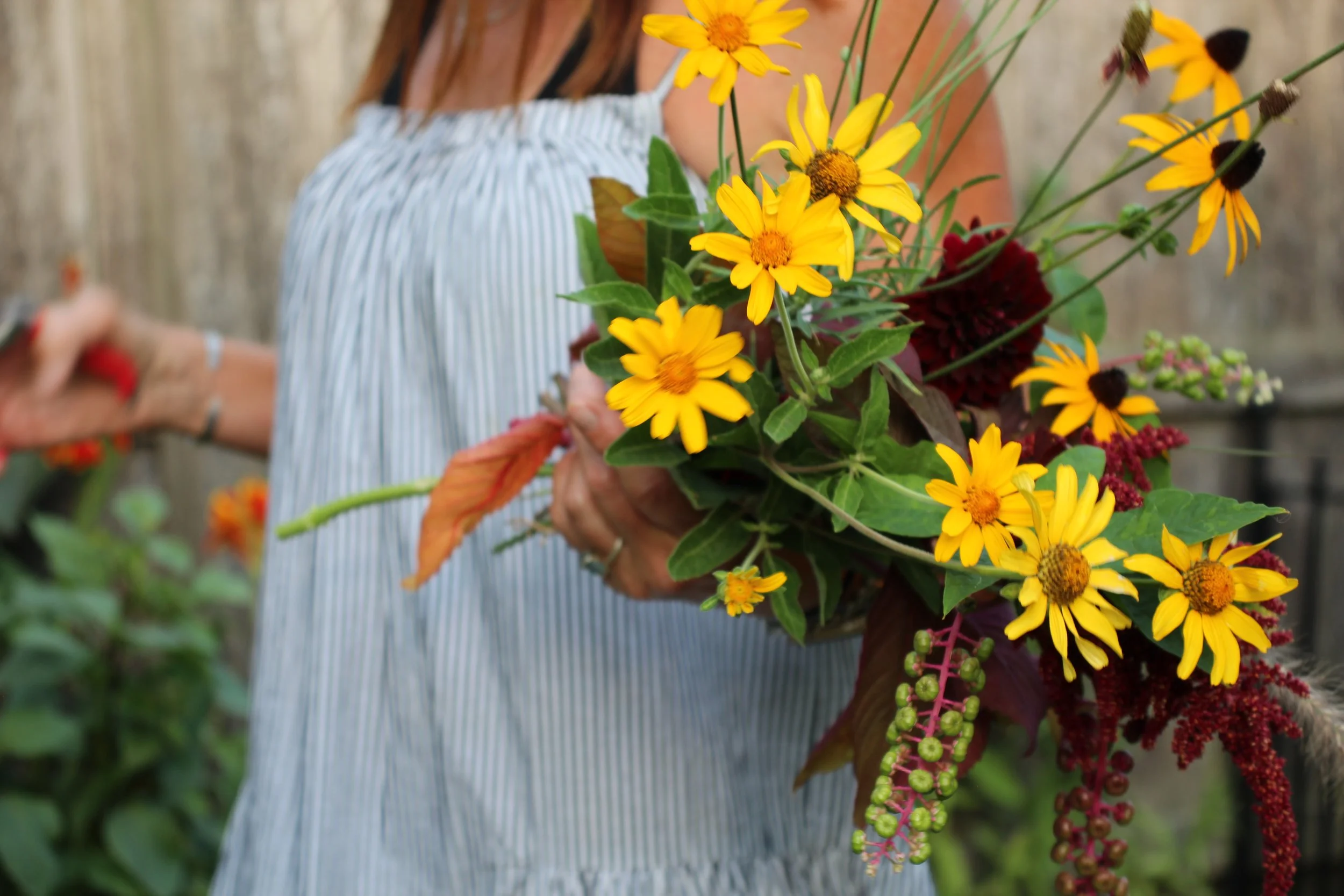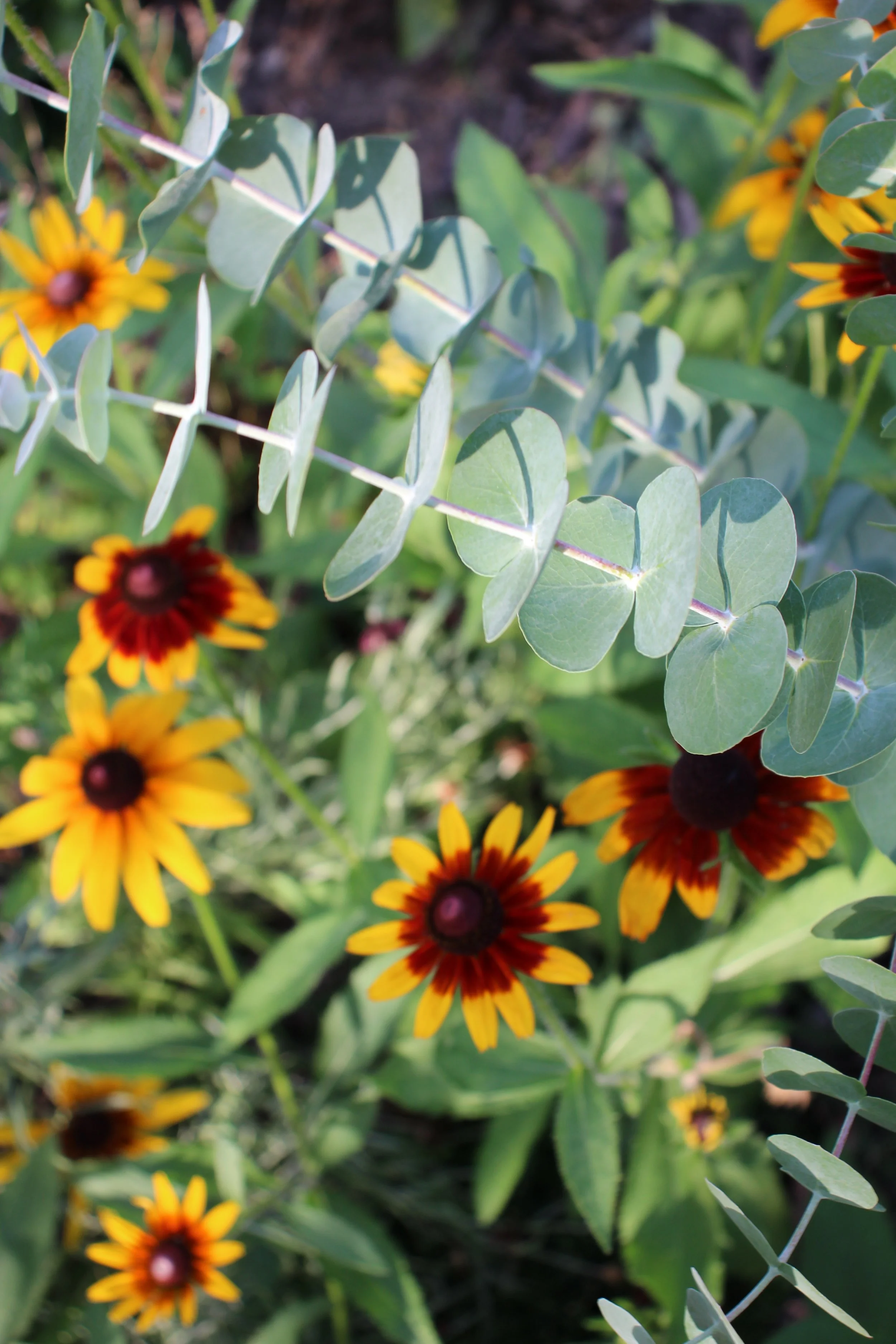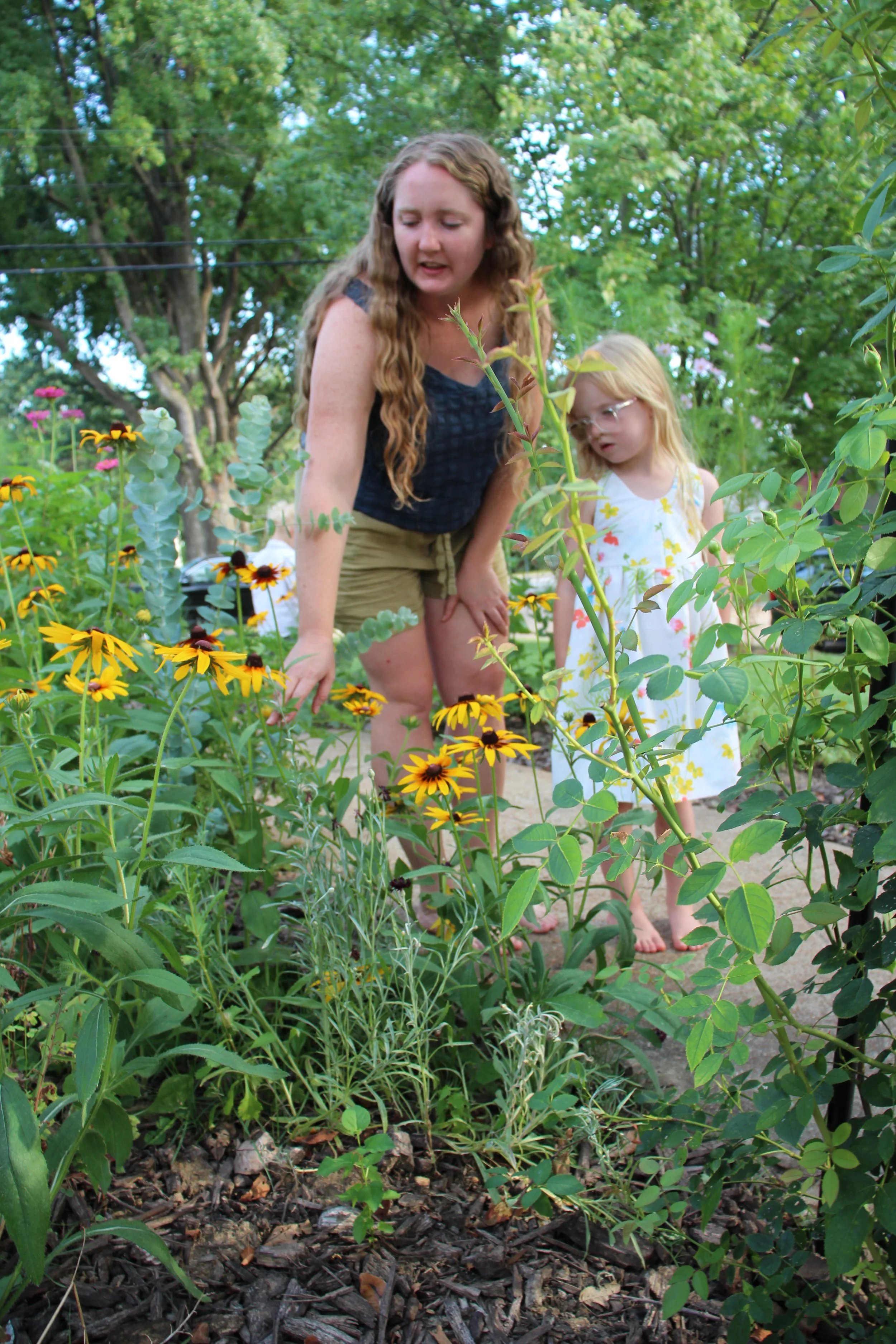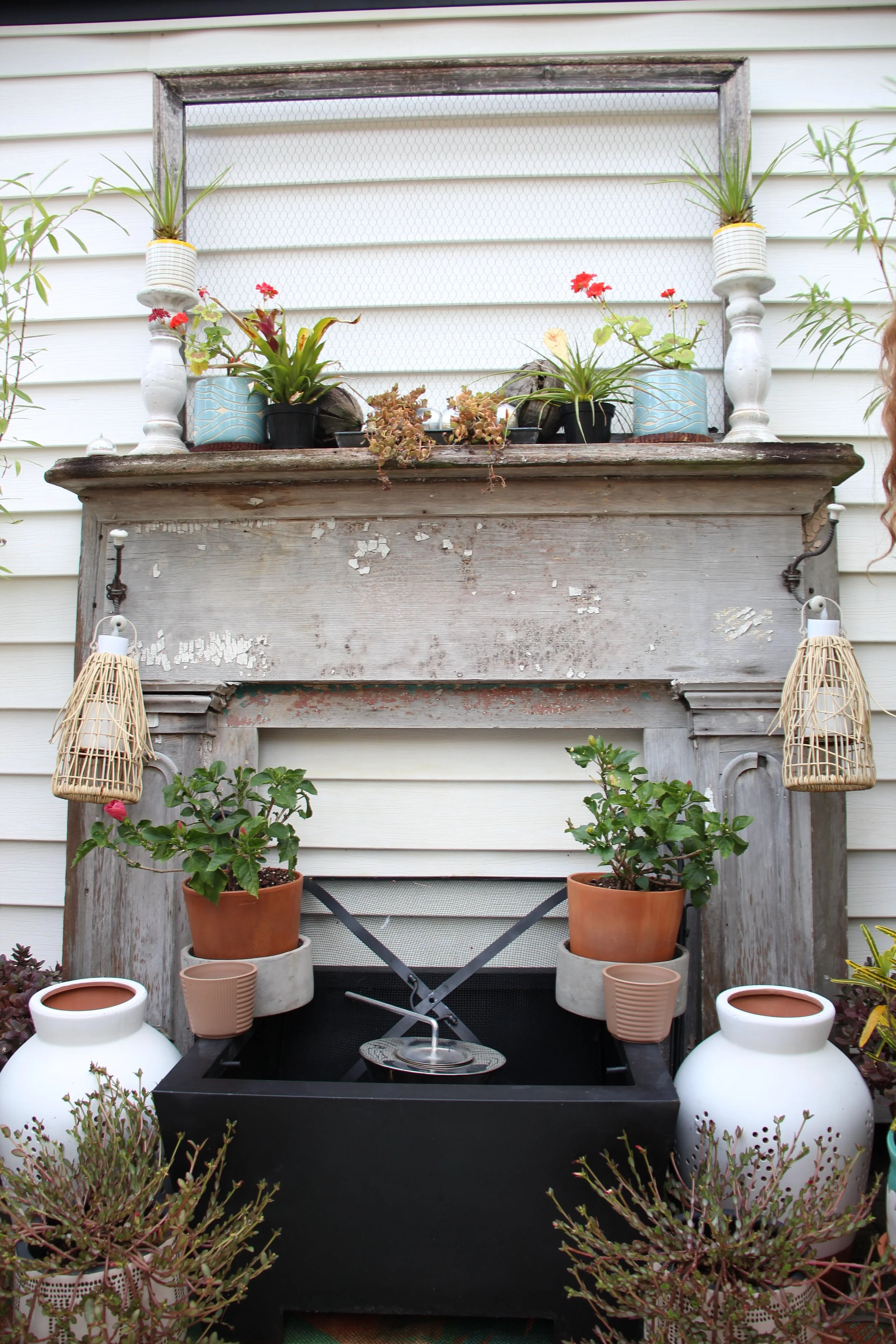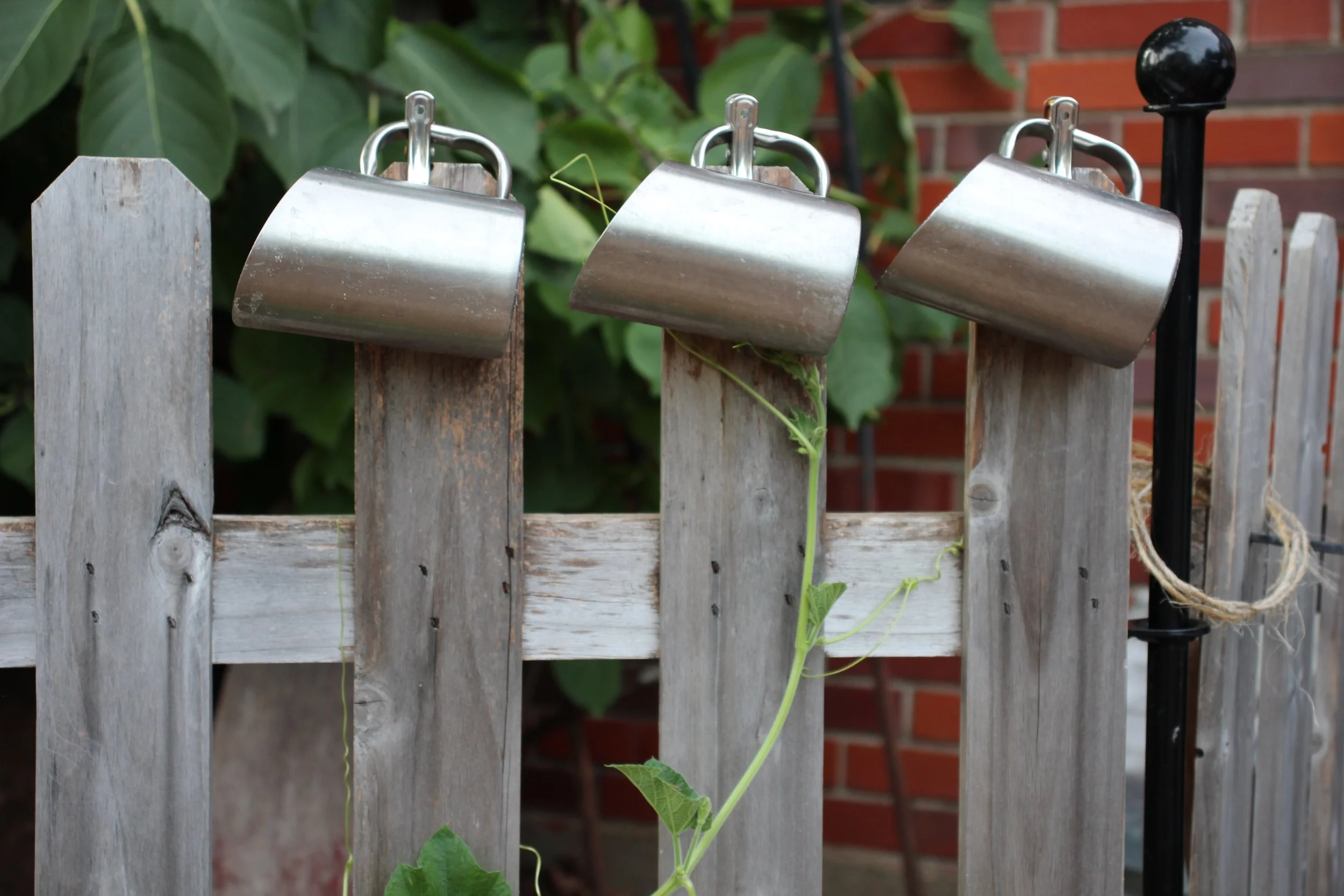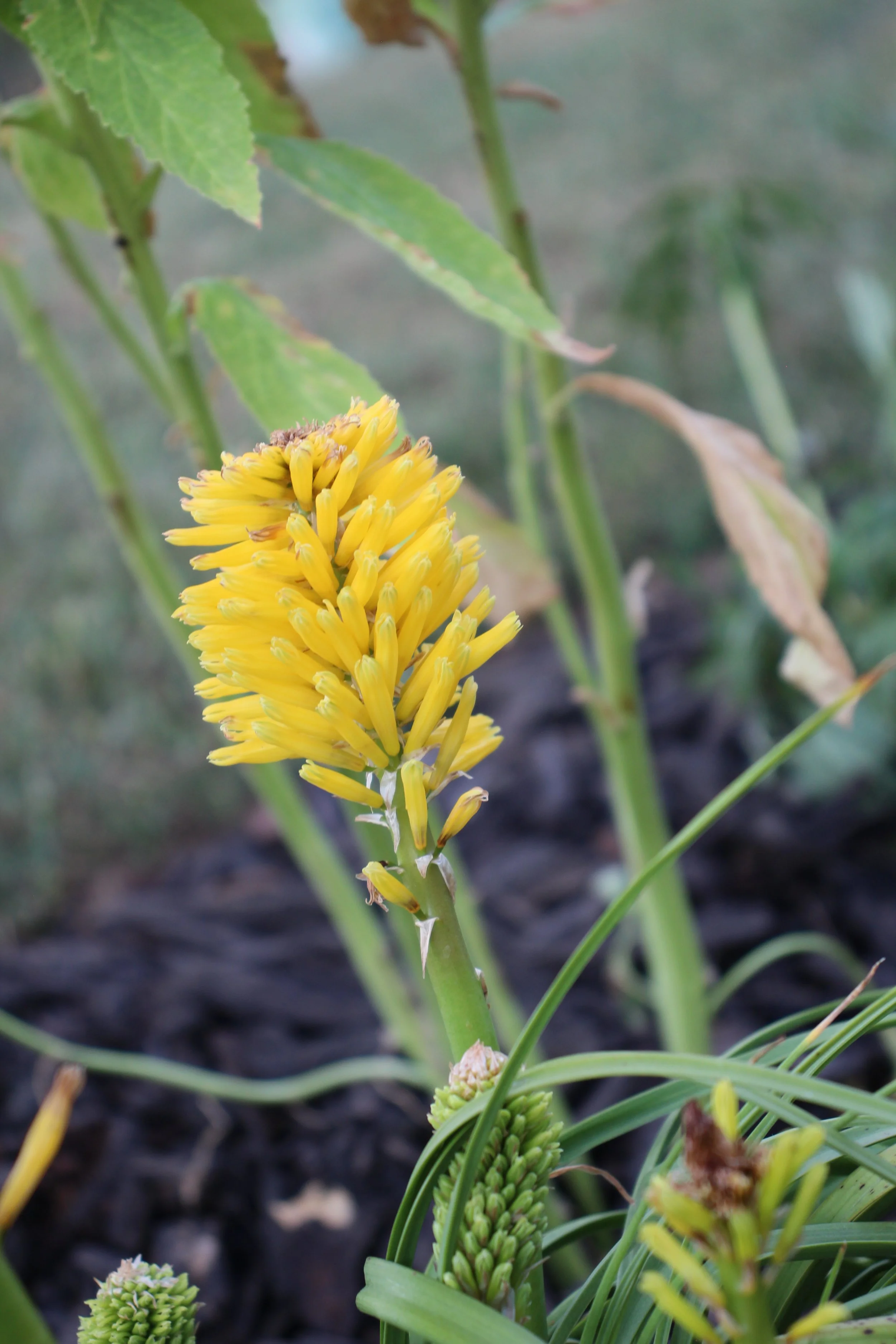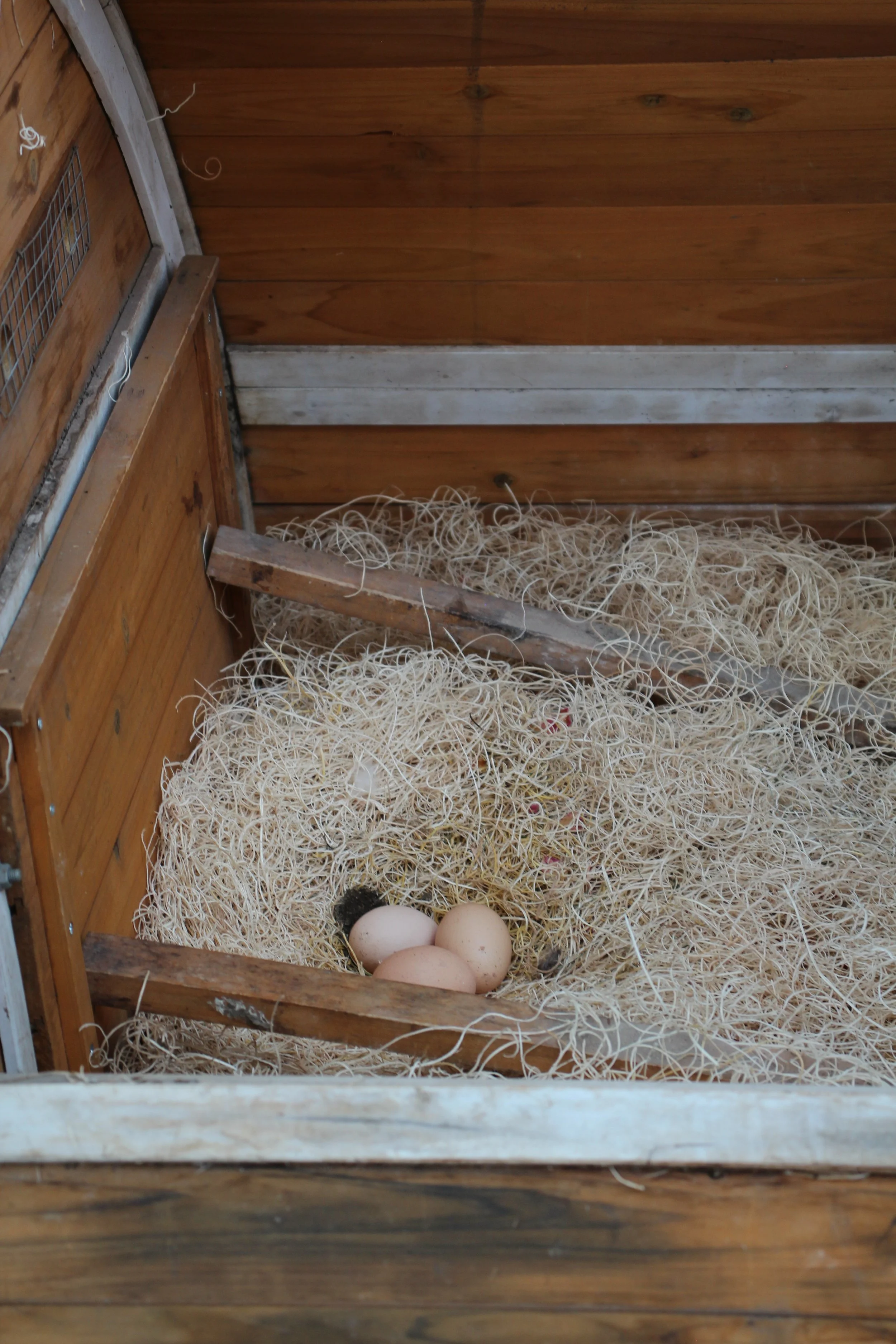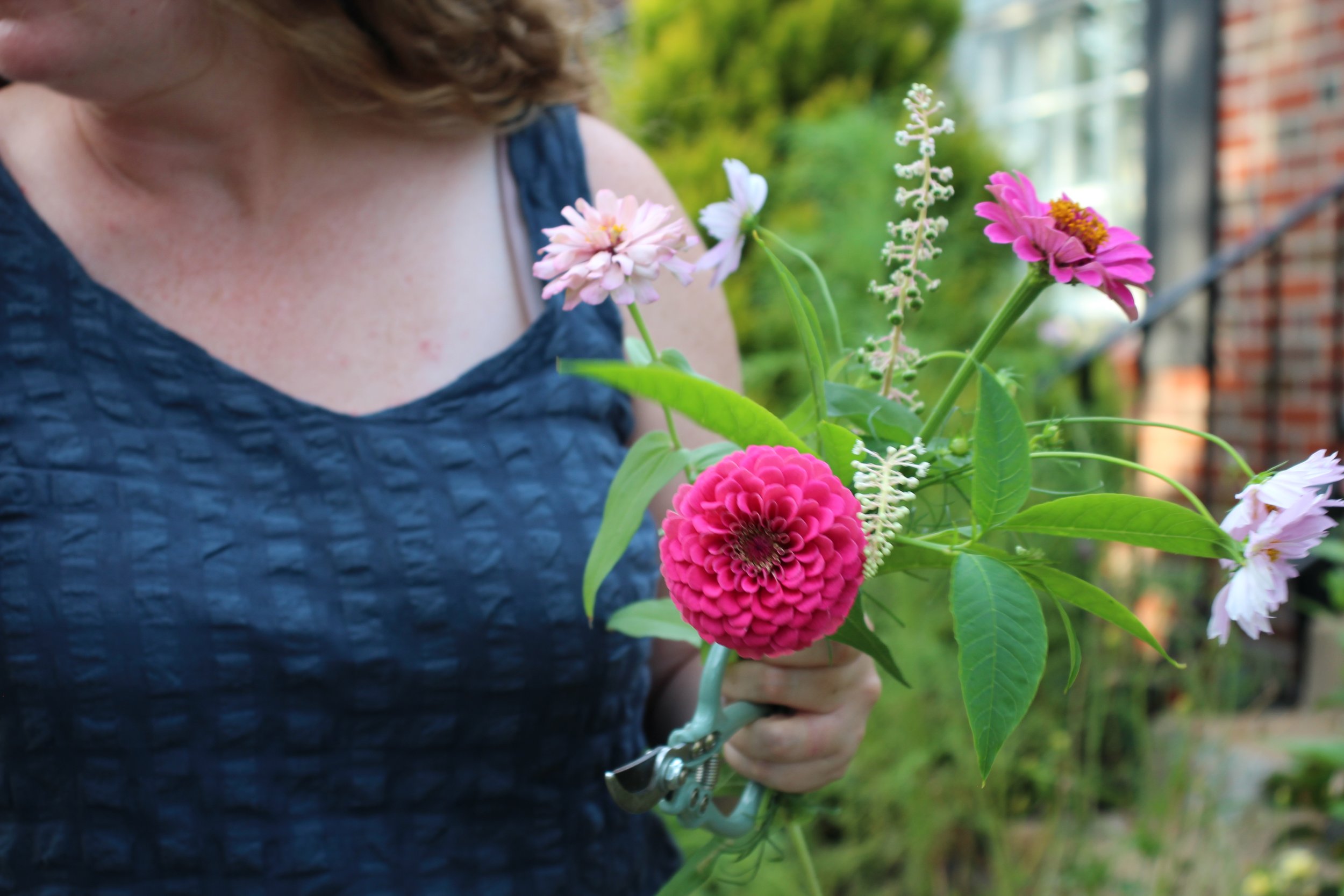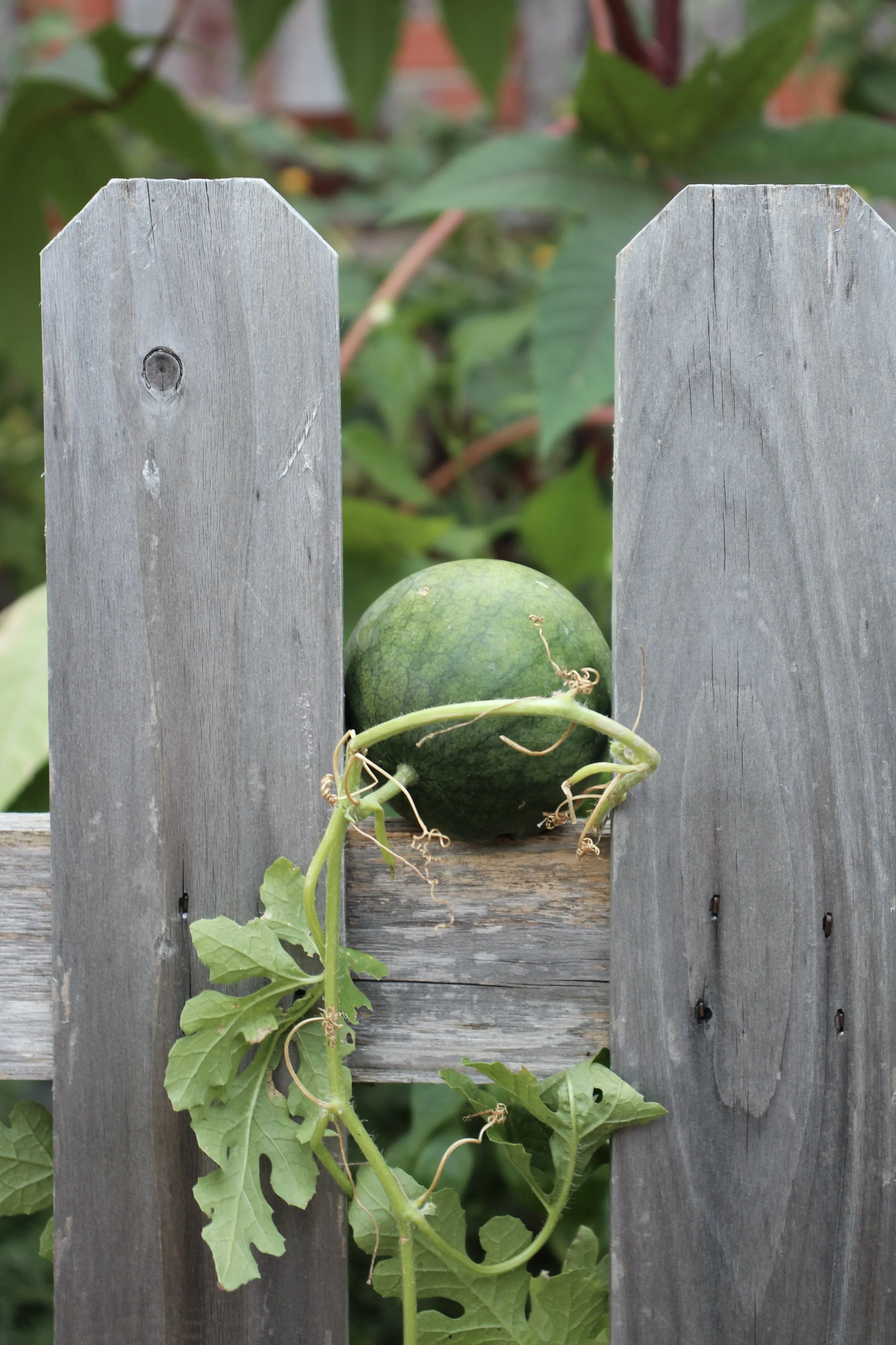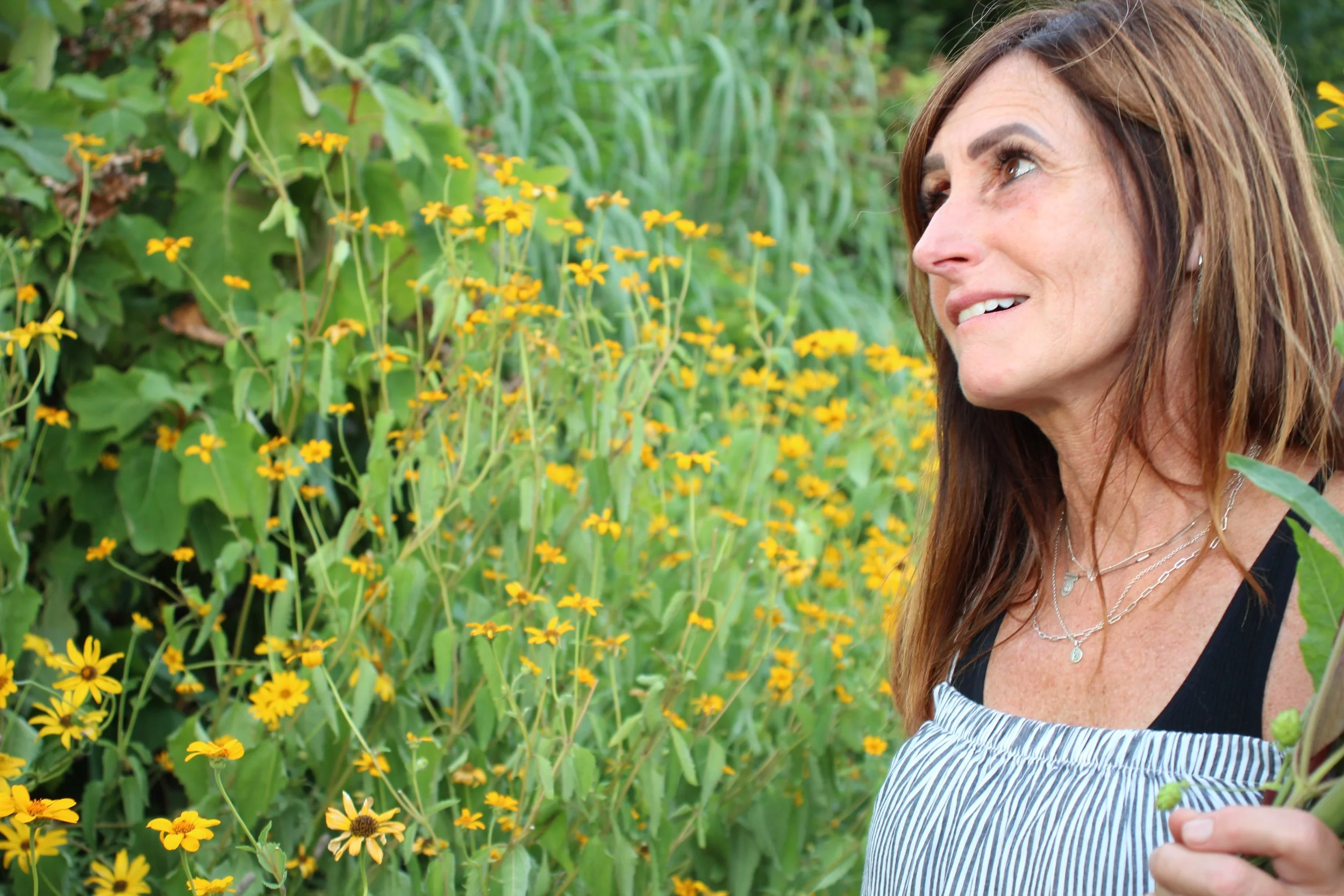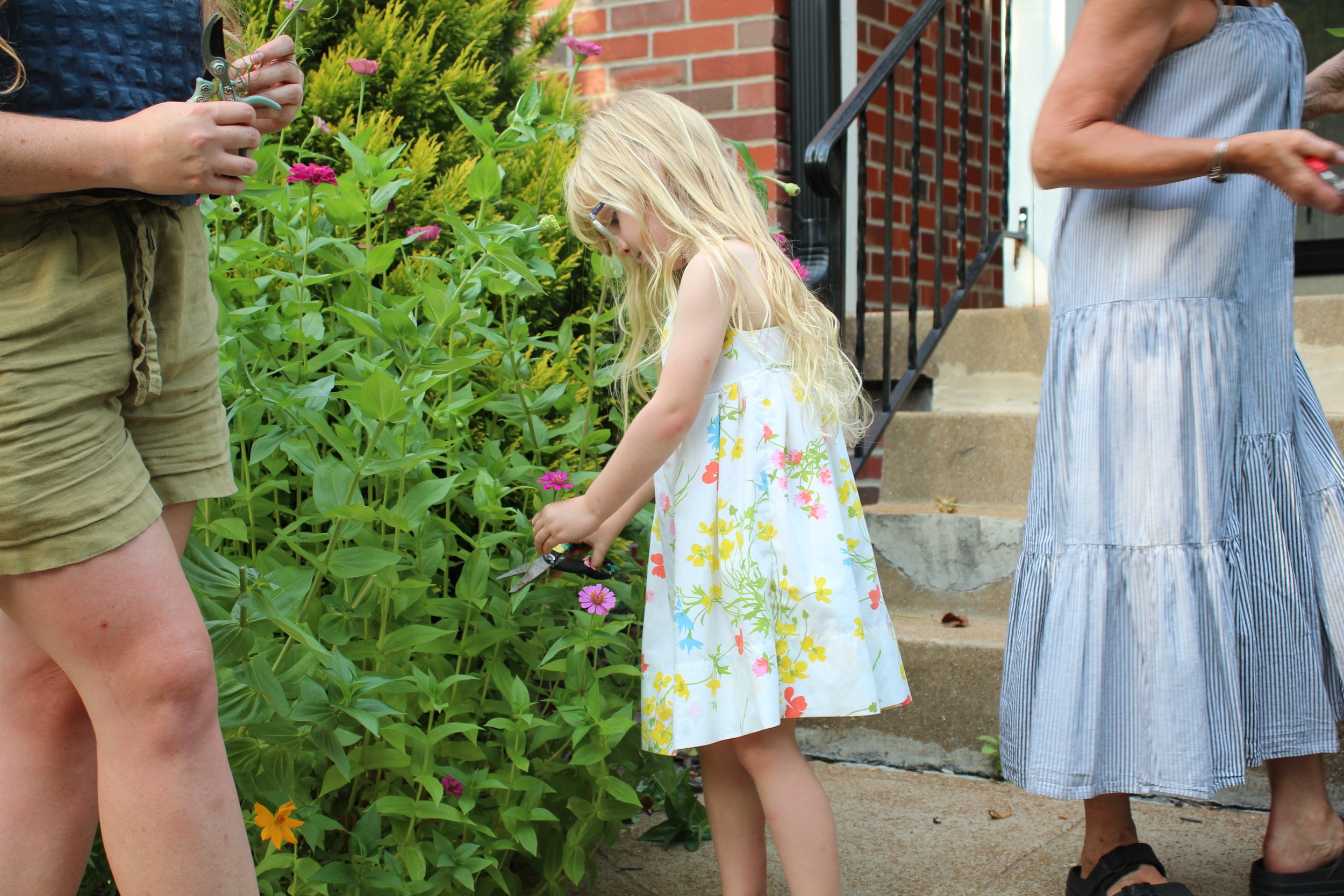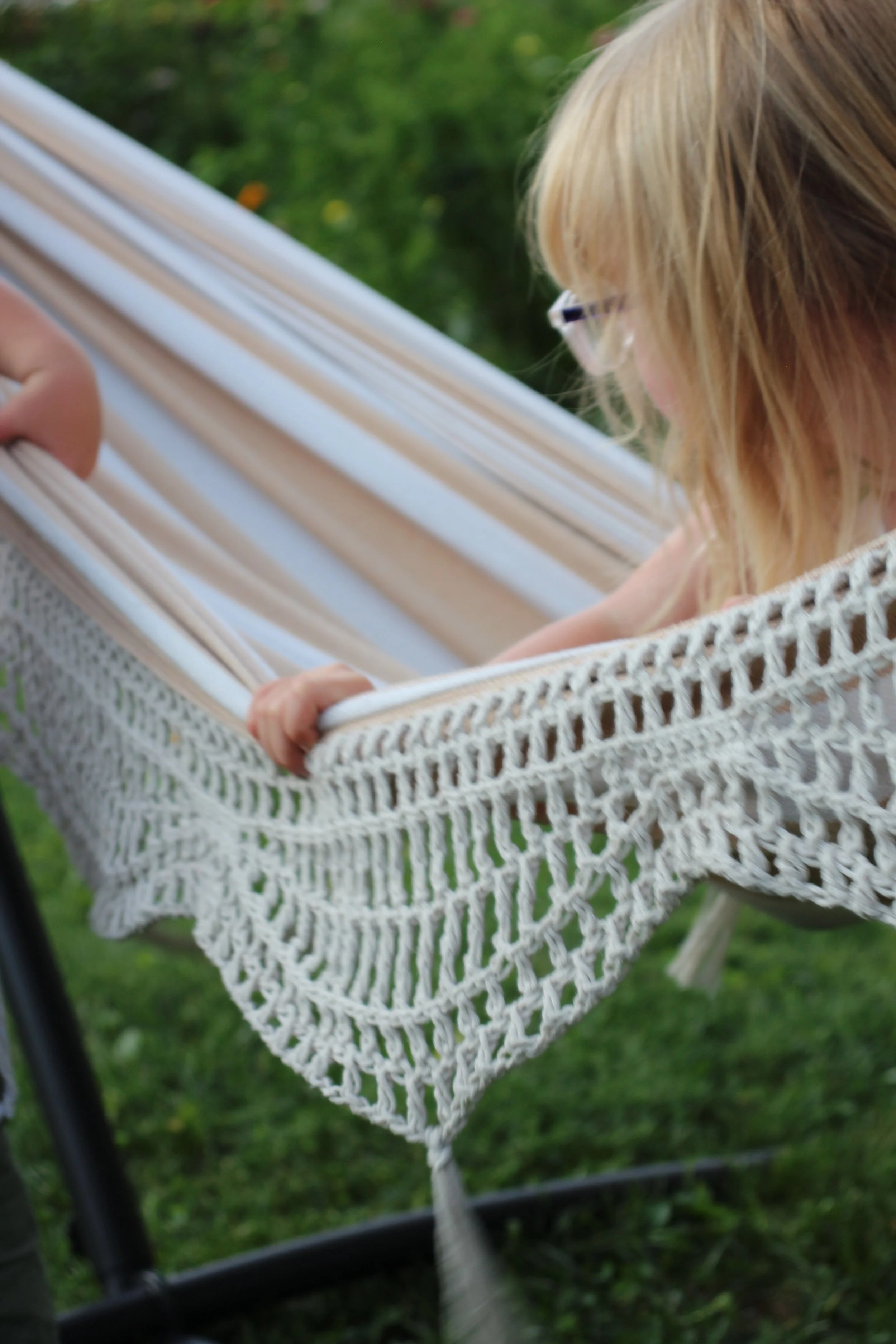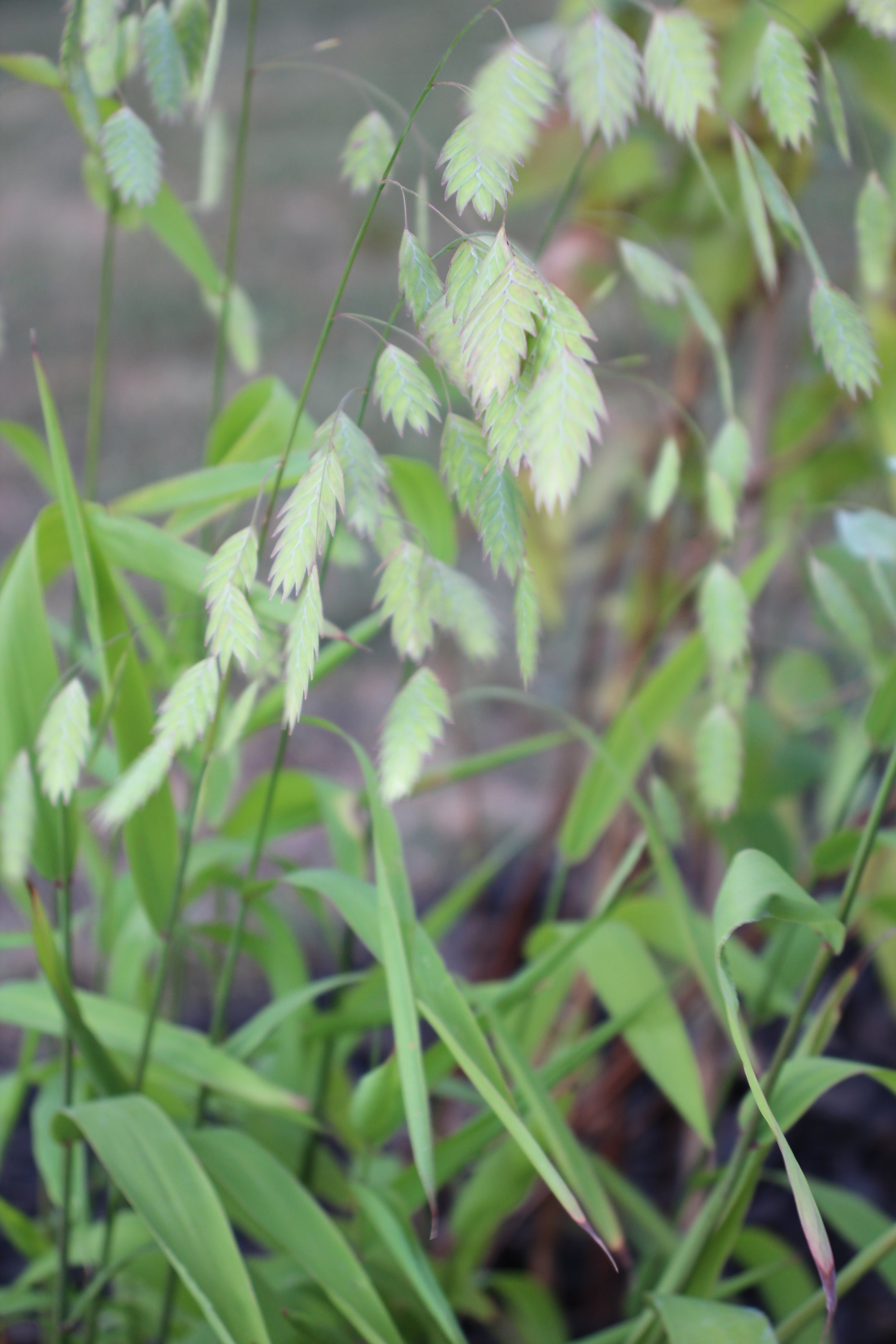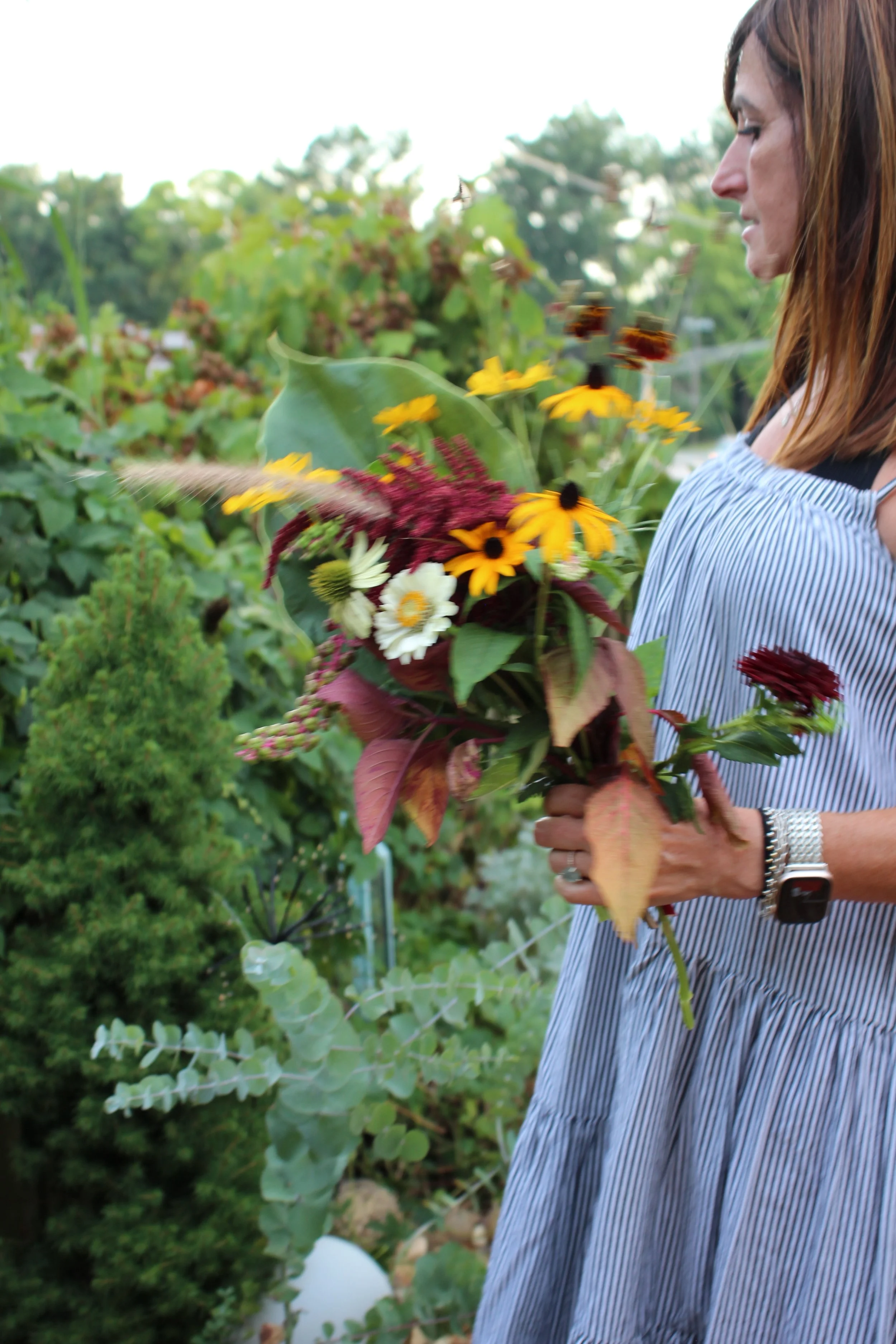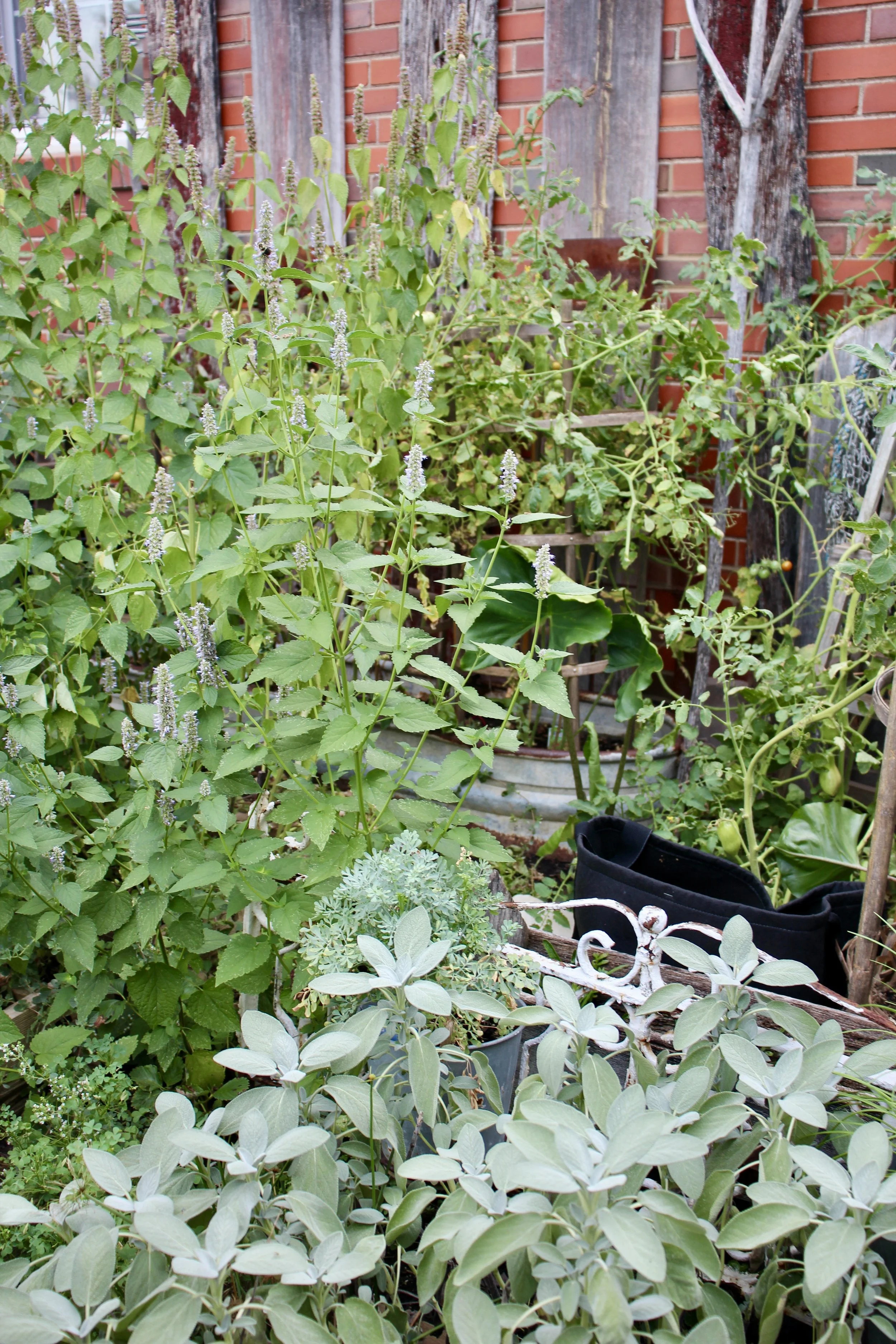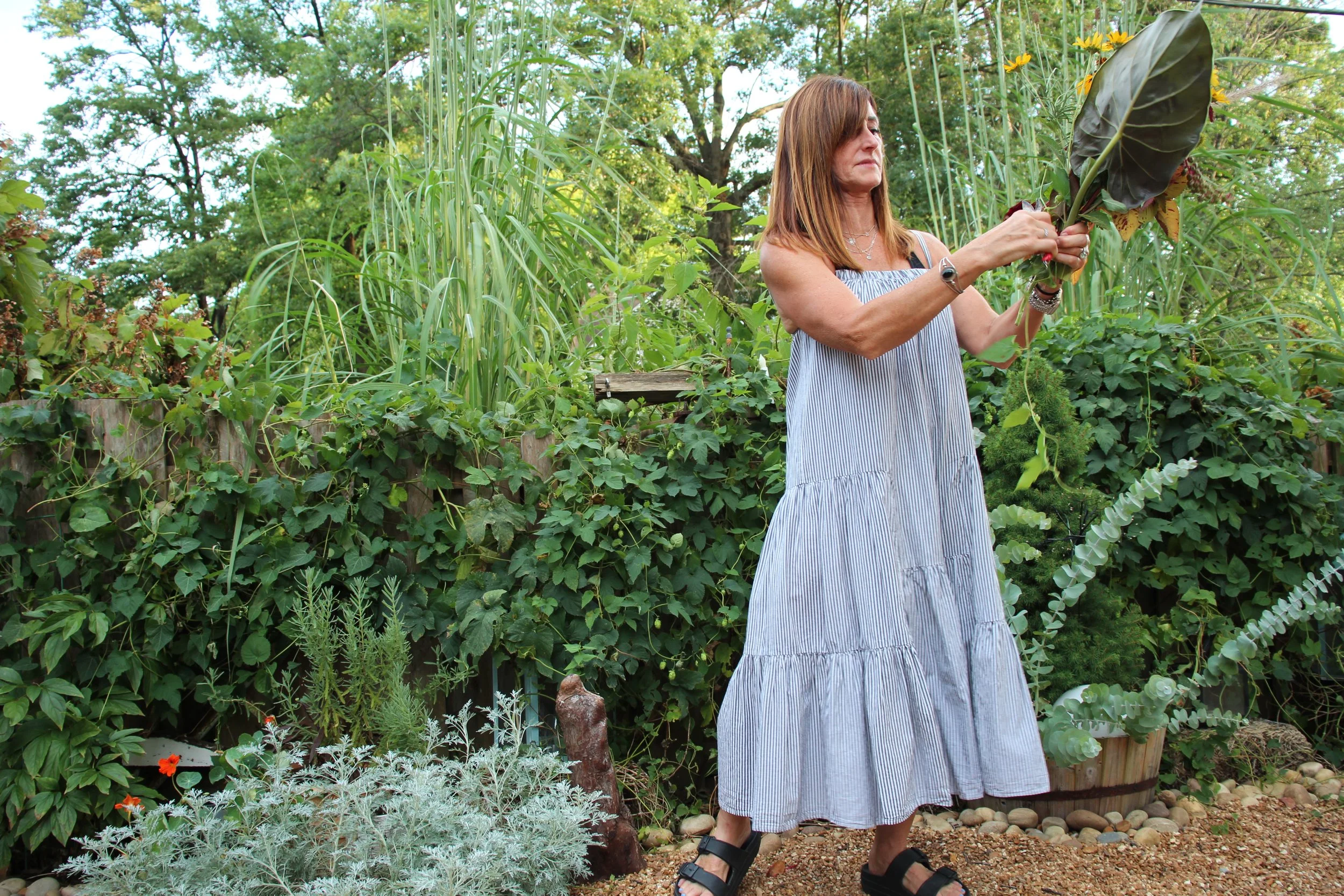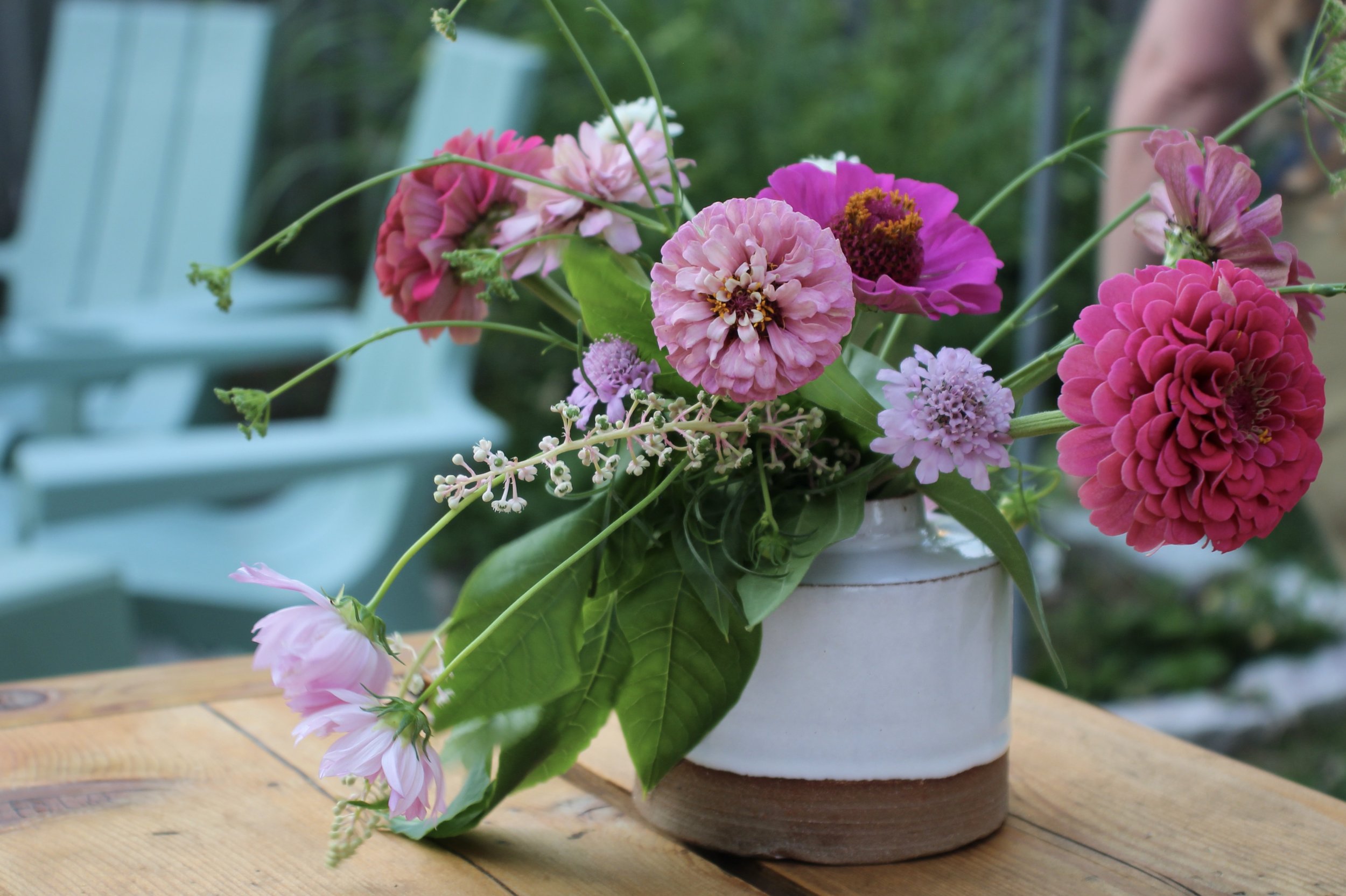Backyard Blooms Garden Tour
A wall of sunflowers the color of split stone fruit jut towards the sky like steeples on the horizon. Bare feet firmly anchored to the soil, she gently drew aside a curtain of shoulder-height marigolds. She brushes carefully through well-established dahlias and zinnias; progressing deeper into the trenches of cultivated blooms.
Sarah wandered fearlessly into her urban flower meadow and stood in its midst greeting petals with a tender touch between index and thumb. When meeting a favorite varietal she was prone to face the stamen toward me with satisfaction. A promise kept from former seasons and to perpetuate in future seasons. Perhaps a seed removed from last years crop, saved and miraculously nurtured for another debut.
In collecting seeds, Sarah teaches me her ways. She opens to me the simple art of gardening that, if done with some care, would pad my purse for years to come.
Soon, Sarah’s little ones would attempt the same feat. They wrestle to part the sea of florals and struggle through a system of strong stems to reach their mama.
The three of them tangled in a muddle of green and pastel hues. A field of color— a paradise— in an established neighborhood off an unassuming and highly trafficked street.
The most exciting gardens have the ability to lift you out of the world and transplant you in another universe. Backyard Bloom business partners, Sarah and Keri, understand the unlimited potential of nurturing such worlds side-by-side.
As neighboring urban gardeners they launched their floral business from a collection of blooms in their own backyards.
Behind Keri's picketed fence next door, my eyes are pulled from one beautiful and unexpected corner than the one before. Weeds with appealing colors and oddities are welcome here as long as they behave and compliment a floral project.
Keri teaches me the value of taking limits off the imagination to discover the unexpected beauty in the art of floral arranging.
As we weave our way around her property we find ourselves entrenched in fragrant nature rooms of various sorts. The first a classic lawn with herbaceous boarders. Easily a place to lounge and allow wee neighborhood kids to run through.
The next a narrow hardscape garden with a Mediterranean-feel. An eclectic blend of potted plants among antique finds like a vintage mantlepiece. Hearty, exotic plants bring in greenery to the concrete patio leading from the back porch of her home.
The crunch of pea gravel creates a symphony underfoot as we enter the final section. A private entertaining garden for late evenings under lights strung high overhead. A fire pit, chicken coop and self-seeded plants define the space. The wildflowers seeded themselves beyond boundary lines for passersby to gawk at the splendid backdrop of rudebekia and companion plants.
Each of Keri’s enclosures bursts with its own possibility of relaxing in a shaded nook, gathering treasures for the table, or getting lost in observation. Even a modest vegetable garden is accessible for eating or decorating.
As mother, children, and friend stand in the midst of their cut-flower heaven, I wonder how dreams so gloriously creative and lovely come into existence other than to simply begin.
Lay down the fears of what if's and failure and just begin.
Quite literally, throw open the gates and allow seeds of promise to trickle over the fence lines and bless those who come close enough to perceive the beauty of progress.
As the sun began to signal the close of a late summer day, I am enraptured as Sarah and Keri demonstrate their dynamic process of floral selection and arranging. The ease of their motions are magnificently organic yet intentional. There is a deep sense of delight in wandering between the front and back gardens of their entwined properties hunting for prospects suitable for instruction.
In the course of long and leisurely moments, a small vase and large antique jug are gradually filled with an assortment of pleasing blooms which could bless a reading corner or table center.
Whilst the children eagerly harvest from vegetable bed to showcase their successes, we bond over the concept of shortened fences. All three of us in awe of how allowing artful practices like gardening have the power to open the gates of our hearts and eyes to unexpected meetings and conversation in our communities.
Q&A
How long have you been gardening?
S: I started at our first house in Joplin, MO in 2014. My father-in-law helped me landscape the front with beautiful perennial flowers and then I had a little raised bed in the back with some tomatoes and wildflowers.
K: On my own, for about 30 years. As a child I used to help my grandparents in their garden on their farm. They had a huge vegtable garden, orchard, and flower garden. I have very fond memories of learning from my gramps and following him around and doing whatever he was doing. Trying to take it all in.
Who or what gave you the desire to cultivate a garden of your own?
S: My mom. I don’t remember really being involved with gardening as a kid, but I can remember my mom spending so much time out in her flower garden, taking care of it and making it beautiful. She made it so lovely and was even in a home and garden tour at one point. I started tending to little succulents in my dorm room when I went off to college and started to get the itch to grow my own garden. Both my mom’s mom and my dad’s mom had lovely flower gardens and I recently learned that my great grandma was an exceptional flower gardener and knew everything there is to know about flowers. I guess it was just in my blood.
K: The who, definitely my Gramps! The what would definitely be my need to connect with the earth and nature. There is nothing quite like getting your hands filthy digging in the dirt! The planning, growing, nurturing, problem solving, harvesting, and finally sharing all the fruits and beauty of all the time, hard work, and love put into it!
What were some of the biggest challenges you faced with your first garden and how did you overcome?
S: I honestly don’t remember much about the challenges to that first garden. In 2017, after we moved to Denver, I had gone in on a community garden plot with my neighbors and learned a lot the hard way. Denver was so incredibly dry, if you didn’t go and water every day, things would just get scorched. I remember early in the season planting tomatoes there and a seasoned gardener came over and said “I wouldn’t do that if I were you, have you checked the weather?” Turns out there was hail in the forecast, a common hardship of gardening in Colorado.
K: It has always been trial and error. Some things work out beautifully and some things absolutely do not. It’s constantly learning, adapting, and evolving. Each year can be so different and bring it’s own challenges like drought or too much rain, insects, disease, excessive heat. You overcome by taking each situation and learning from it and how to best deal with it if it happens again.
Thinking about this season, what are some of the challenges you are currently contending with?
K: Watering daily with the excessive heat we have had. Flea beetles eating plant leaves. And there is just never enough time to do all the things you want to do to perfect your yield.
S: We just moved here from Denver last fall. I had finally grown accustomed to gardening in that climate and gardening here has been a learning curve. I cut out so much grass and tilled up the soil, added raised beds, planted a ton of perennials and flowers and vegetables from seeds and everything has done really well all things considered.
But, the squirrels pulled out and ate the tops of many of my sunflower sprouts so I replanted and made a barrier with chicken wire that ended up protecting a large percent. Sawfly larvae went to town on my newly planted David Austin roses. The moisture from a super wet, cool spring delayed a lot my plants because they were so water logged. And oh, the weeds! Things seem to grow so much easier in Missouri, especially the weeds. Throughout the season I tried to weed at least ten minutes a day to stay ahead. Weeding on hot muggy evenings in a swarm of mosquitoes has been a form of gardening culture shock for me this year.
What are the greatest joys you have discovered in your garden?
K: Besides the excitement of seeing everything coming back to life and producing first blooms or fruit it would have to be the wildlife. I find frogs, toads, chipmunks, bunnies, squirrels, praying mantises, katydids, butterflies and moths, caterpillars, hummingbirds. This year I had a baby possum and my favorite Bluebirds. I had not seen a Bluebird since I was a child on my grandparents farm. They built a nest in one of my birdhouses and now we have a family of five.
S: I love the joy of seeing the first bulbs of spring push through the ground. All winter, you have no idea if all that bulb planting will amount to anything. There’s so many acts of faith in gardening, like planting bulbs, planting seeds. You have to trust the process and practice patience. It’s such a good practice in letting go, so many things are outside of your control. Then, after months of winter, you see the first bulbs popping through the soil and it feels like a little miracle!
I enjoy the beauty of the garden, but I enjoy sharing it even more. Now with the business I’ve started with my neighbors, getting to spread the beauty by selling bouquets grown right in our backyards.
How is your family impacted or involved in the garden?
K: My girls are adults now. One lives in Boulder and the other lives in Chicago so they get me FaceTiming them all the time. Showing them the progress of the gardens or the current flower, herb, fruit or veggie I’m obsessing over.
S: My husband, Ben, is the heavy lifter. Hauling dirt, sod cutting, tilling, digging and rolling his eyes when I come home with more plants. Our children, Maeva and Ellis always tote along with me in the garden with their own little wagon, trowels, and rakes. They help plant all of the seeds and then help with the watering throughout the season. They love to help harvest and Ellis has been eating cherry tomatoes right off the vine since before he could walk! Maeva (6) will say, “Mom, did you see your pumpkins, they are getting so big!”. She’s so invested! Ellis (3) asks, even at restaurants “Mom, are these from our garden?” I love how much they are a part of it all.
What factors impact your decisions on what to grow each season?
K: I tend to buy whatever I see that I like and then figure out how to fit it in. I also like to try to grow something new that I’ve never tried before. This year it was lemon eucalyptus, foxglove, cucamelons, okra and eggplant.
S: I save seeds from most things I grow each season and love to plant next generation plants from what I grew the year before. The thing about seed saving is that you rarely end up with the same exact variety that you pulled the seeds from because everything is open pollinated, but I love the surprise of it!
I go for the comically big flowers like Mammoth Sunflowers and Big Max Pumpkins, or the unique flower varieties with lots of petals like Double Click cosmos, peonies, David Austin garden roses, double varieties of tulips and daffodils, and the whimsical like dark knight scabiosa or Love-In-A-Mist.
Investing in perennials that come back every year is a must and planting hardy annuals like zinnias and rudbeckia is always worthwhile. Anything that produces more the more you cut it makes it into the garden.
If something doesn’t do well for at least 2 seasons, I usually will try something else in it’s place, but I just love trying things and every year try something I haven’t done.
Has gardening been economical for your family? In what ways?
K: (with a laugh) Absolutely not. I spend so much money every year on gardening between seeds, plants, soil, mulch, tools and equipment.
It does give back in the way of spending less on veggies during the summer months and spending nothing on cut flowers because I can just go out into my gardens and cut enough for a bouquet anytime.
S: Yes! Before moving to St. Louis I was selling bouquets out in front of my house. Putting out bouquets from my garden twice a week. People would drop cash in my locked mailbox or Venmo me.
Now my neighbors, Keri included, and I have started Backyard Blooms where we are selling bouquets from what we grow. We had our first pop-up event selling bouquets at a local grocer last month and have another one this week!
Big picture, we are going to be growing flowers in a plot that another neighbor has graciously offered for us to use and will begin selling flower subscriptions next season where people can sign up to get monthly, bi-weekly, or weekly flowers through the growing season.
What life lesson is your garden instructing you in this season?
K: To share my garden and my passion for it in a new way. Starting up Backyard Blooms, a local floral business, with my amazing neighbors.
S: Don’t wait to put roots down. Don’t hold back out of fear, plant the seeds. Plant the bulbs. Till up the soil. Add the compost. Sow something new.
Don’t let the fear of failure make you hesitate to scatter the seeds. We moved into our house at the beginning of November and I could have easily held back, I could have waited to put my roots in because being uprooted can hurt. Living in a place where you once thrived but then began to wither can make you hesitate to put roots in at a new place. The only way for new growth is to put roots in and to lean in.
There’s risk in it, but there’s beauty ahead. I have done this literally by planting a new garden in a new place, but I’ve done this figuratively too. I’ve leaned in to new friendships and have found new places and a new home to put my roots into and I feel like I’m flourishing for the first time in a long time.
What is the most exciting plant in your garden?
S: Probably my second generation Floret Flower Dawn Creek Pastel Zinnias! They are different shades of dusty peach and pink and were open pollinated with several other varieties last year. I saved the seeds from them in my Denver garden before we moved and this year all of them came up and are even more unique, holding characteristics of the original Floret Flower varieties, but with their own personalities.
K: I’m obsessed with amaranth, castor beans, malabar spinach, and dill. They are all so interesting and add excitement or that wow factor to arrangements!
What plant or methods are your curious to adopt in coming years?
K: I’m interested in learning about hydroponics and aeroponics.
S: I’m interested in trying no-till gardening and cover cropping. When we start our plot extension on our neighbor’s property, we are considering cover cropping this fall and in future years doing a no till method for our flower rows. Doing cover cropping helps fix the soil and the dead cover crop can simply be pressed down and used as mulch. No till methods help protect the soil’s natural biome.
What effects have your garden had on your personal or local community?
K: The opportunity to learn and share gardening ideas, processes, tricks. The opportunity to create and sell beautiful bouquets with my neighbors while adding curb appeal to my property. Helping the ecosystem through planting.
S: Starting Backyard Blooms has been such an incredible way to get to know my neighbors. We each bring something unique to the table that benefits our little business and getting to work together to share beautiful flowers with our community is such a gift. We’ve loved seeing other neighbors get excited about what we are doing and support our floral business. This is just the beginning and I can see that sharing our abundance brings so much joy to others.
What factors make you continue to show up or come back to the soil?
K: It keeps me sane but I’m not sure I can say it’s cheaper than therapy (laughs).
S: There are a million connections to spiritual realities to be found in gardening and there is always something new to ponder, to lean in to, to observe, and to experience. There is so much wonder and magic in the act of gardening and once you’ve eaten your first homegrown tomato, or put your first pumpkin you grew from seed on your front porch in the fall, or brought in your first bouquet of flowers freshly cut from you backyard, you’ll keep coming back. Gardening is a mundane practice that slows you down enough to notice the beauty in the details and in the process of things. It teaches you patience and faith and hope and how to be enchanted.
Can you describe an aroma from your garden?
S: Sunshine and lemon and black tea is the Bathsheba David Austin Rose.
K: I love the smell of the basil, lemon basil, lemon eucalyptus, regular eucalyptus, and roses.
